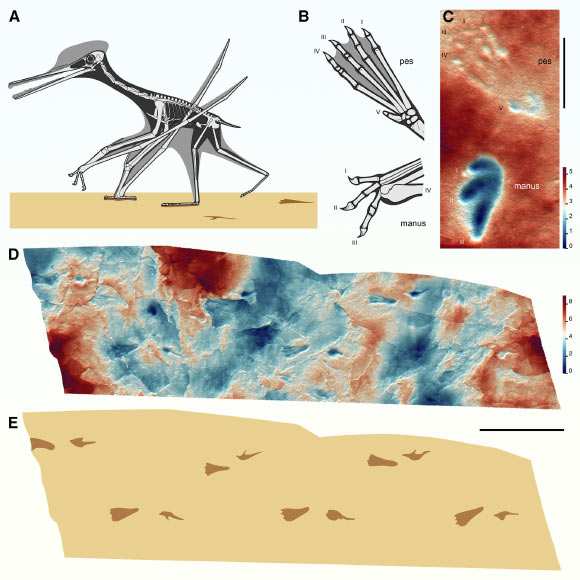Now Reading: Study Reveals Pterosaurs Adapted to Land 160 Million Years Ago
-
01
Study Reveals Pterosaurs Adapted to Land 160 Million Years Ago
Study Reveals Pterosaurs Adapted to Land 160 Million Years Ago

Fast Summary
- Discovery: A new analysis of fossilized footprints reveals that some pterosaurs, traditionally seen as flying reptiles, were adept at walking on the ground.
- Research Insights:
– Scientists identified three distinct types of pterosaur footprints linked to specific behaviors and environments.
– Neoazhdarchian pterosaurs were discovered to be both sky dominators and terrestrial inhabitants.
– Ctenochasmatoid tracks suggest thes species waded in coastal regions, catching prey from shallow waters.
– Dsungaripterids had footprints indicating powerful limbs suited for shellfish hunting on land.
- Behavioral Evidence: Footprints provide facts about movement patterns, habitat use, and ecological adaptation-areas previously less understood via skeletal remains alone.
- Importance: Study highlights that pterosaur tracks are valuable for understanding past ecosystem roles beyond conventional body fossils.
- Publication Details: Research findings published in Current Biology on may 1, 2025.
Image:
!pterosaur Footprints
Caption: Reconstruction of Ctenochasma elegans walking; detailed track morphology associated with coastal and terrestrial locomotion. (Credit: Smyth et al., Current Biology)
Indian Opinion Analysis
This study redefines our understanding of prehistoric biodiversity by illustrating how flying reptiles like pterosaurs adapted to both aerial and terrestrial ecosystems. The identification of three footprint types expands knowledge about their versatile lifestyles-whether wading in lagoons or traversing inland habitats alongside dinosaurs. For India’s emerging interest in paleontology, this method could inspire future research across ancient terrains where fossilized footprints may reveal untapped data about ancient wildlife.
Moreover, emphasizing trace fossils over skeletal remains creates opportunities for deeper ecological insights into extinct species’ behavior-a potentially meaningful strategy for India’s archaeological studies centered around lesser explored Mesozoic regions within it’s territory. By adopting such interdisciplinary techniques combining biology with geology, researchers can enrich India’s contributions to global paleontological discoveries.
























